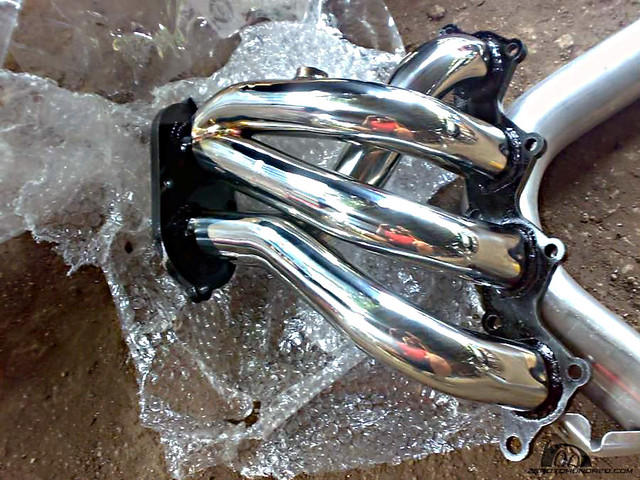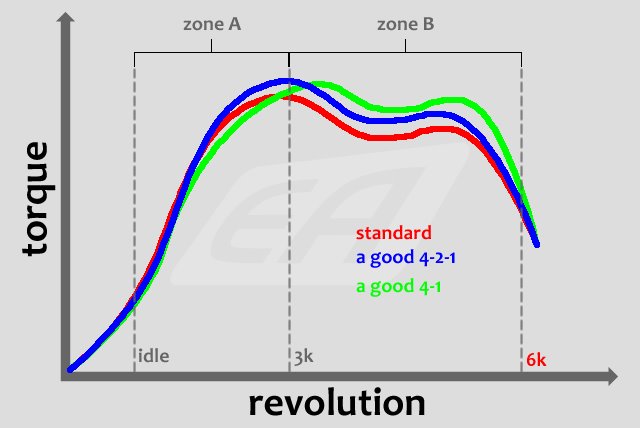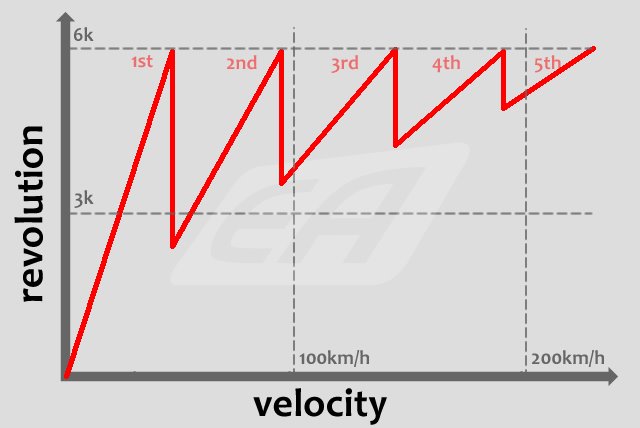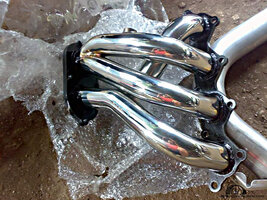
I pretty much know what I want in my extractors. It has to be tuned length, ceramic coated, mandrel bent and I want a 4-2-1 setup. But I get asked "why?" so often I get tired of explaining.
So what I've done here is extracted Drexchan's entire explanation on how to choose an extractor based on what your preferences are.
Enjoy!
(Words and pictures courtesy of Drexchan and all are his intellectual property but edited for clarity)
Exhaust extractor FAQ: 4-2-1 or 4-1 better?
There isn't a simple answer. Asking the question is making the situation complicated already.
Lets go through two hypothetical graphs before I elaborate more.
GRAPH 1) Typical gain from a 4-2-1 and a 4-1 compared to standard.

**go google the relationship between power and torque
A typical 4-2-1 makes good gain from low-mid rev range to rev cut, without losing the low range.
A typical 4-1 makes huge gain from mid rev range to cut, but losing the low range slightly.
SO WHICH IS BETTER? This is a question you should ask yourself.
GRAPH 2) Typical revolution vs velocity relation for a 5-speed manual transmission

**revolution is RPM lah...
**velocity is speed lor....
**applicable for automatic transmission too
Now, check Graph 2, compare that to your driving style, see which rev range you use most (in normal driving, highway cruising, and sprint). Then compare that with Graph 1, see which type of extractor suits you.
Situation A:
You are doing a sprint, you will only use zone A (1k rpm to 3k rpm) once or twice and from 3rd gear on wards you will be using zone B (3k rpm to 6k rpm). So you want a 4-1 because it gains more in that range. Whatever gain in zone A (from a 4-2-1) is near to useless to you, and the gain in zone B from a typical 4-2-1 is lower than that from a typical 4-1. So a 4-1 is better for sprint.
Situation B:
You drive the car in town with traffic and you shift at 4k rpm max. You will need a 4-2-1 because you will be using the low to mid range most. The loss in zone A from a typical 4-1 will make your car more lethargic to drive at low speed with high gear ratios.
Situation C:
You are cruising on highway in 5th gear at 110km/h or slightly higher, and occasionally speed up to 140km/h to overtake some slow cars. You will be using zone B most of the time. So a typical 4-1 will be more suitable for you.
Situation D:
TOP SPEED? From the graphs, it has to be a 4-1 but since aerodynamic property of the entire car is more important at that speed, you won't experience much differences between the two. One may find the need to use 4th gear instead of 5th when a 4-2-1 is used, and it's easier in 5th with a 4-1.
So, it's all about the power band! Nothing to do with 4-2-1 or 4-1. It's also about how you use the power band, nothing to do with 4-2-1 or 4-1. CLEAR?

Attachments
-
229.5 KB Views: 1,771





